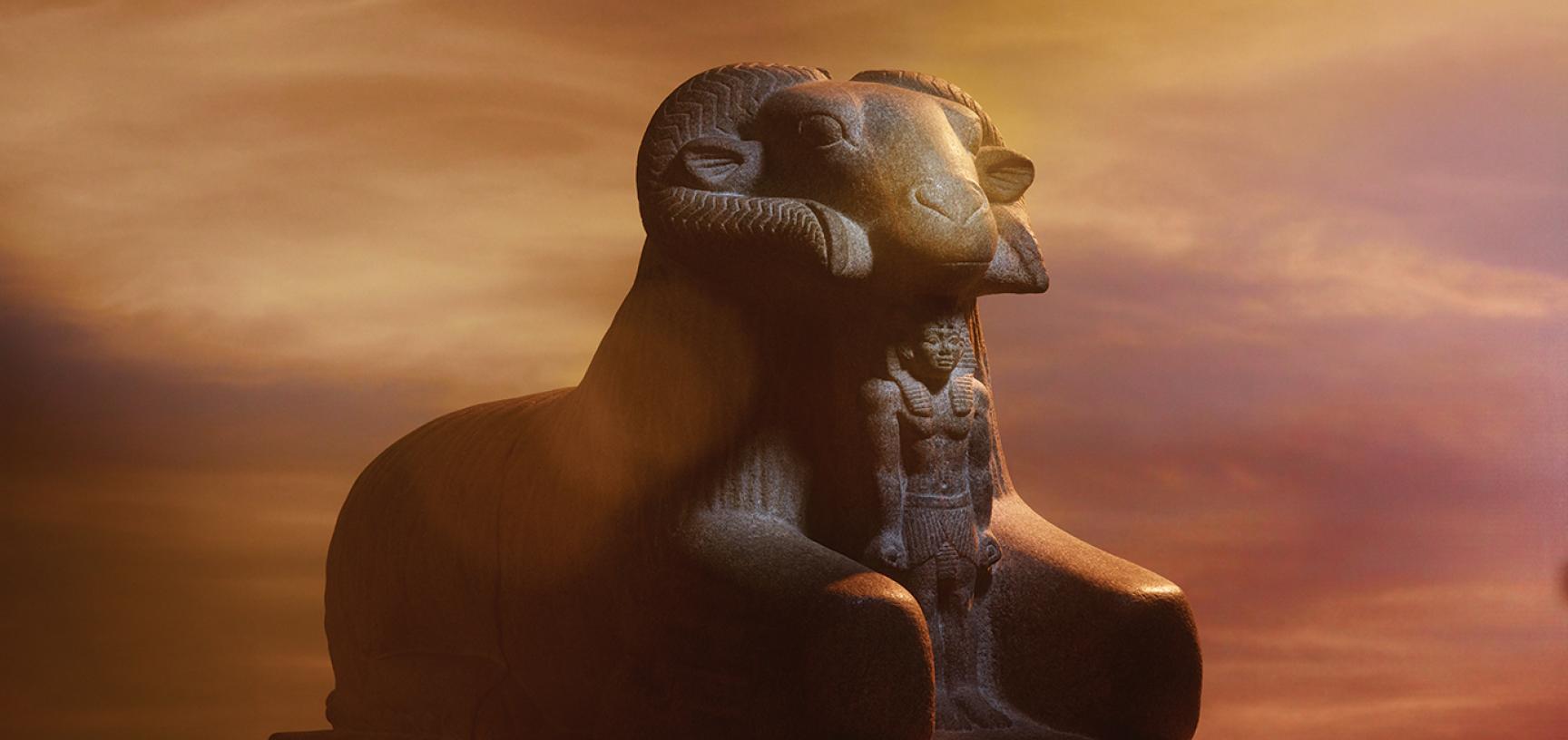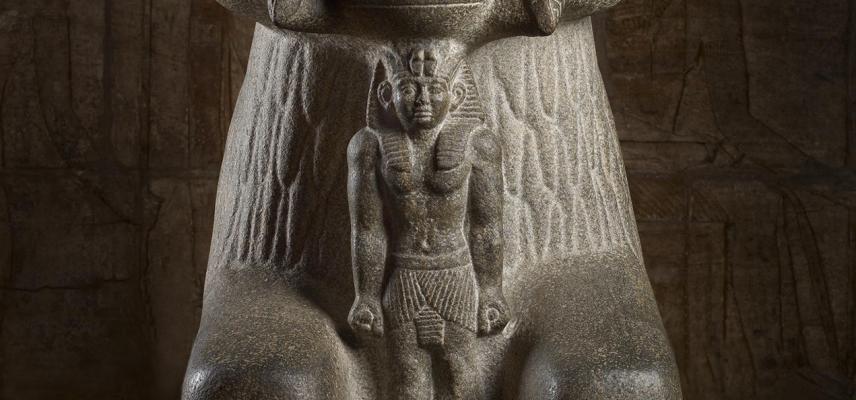RAM OF AMUN-RE
The powerful god of sun and air
This imposing and stoic statue was built by King Taharqa, conqueror of Egypt. The Ram represents the powerful god of sun and air Amun-Re, with Taharqa standing below. King Taharqa was the third in the line of Kushite rulers whose power extended from their native Nubia (northern Sudan) to the whole of Egypt, which they ruled as the pharaohs of the 25th Dynasty. Throughout his reign of Egypt Taharqa used the symbolic imagery of Amun-Re to evoke power and strength. Many depictions of King Taharqa show him with the ram’s head and sun disc, symbolic of Amun-Re, worn as earrings or an amulet around his neck.
Amun was a major ancient Egyptian deity who appears as a member of the Hermopolitan ogdoad (the Ogdoad were eight primordial deities worshipped in Hermopolis). Amun acquired national importance in 16th century BC after the rebellion of Thebes against the Hyksos and the rule of Ahmose I. At this time Amun was fused with the Sun god, Ra and became Amun-re (or Amun-Ra).
The statue sits in the Egyptian and Sudan galleries outside the Shrine of King Taharqa in the Ashmolean, the same position it was originally found in. A duplicate of this statue would have sat opposite to intimidate intruders and protect the shrine. The shrine itself was a self-contained structure within the temple of Amun-Re at Kawa, Sudan.
Ram of Amun-Re
Kawa, Sudan
About 680 BC
Granite gneiss
Presented by Mrs Nora Griffith in memory of Professor Francis Llewellyn Griffith, 1936
View on our online Collection Online Site: AN1931.553
License this image - visit the Ashmolean Image Library







